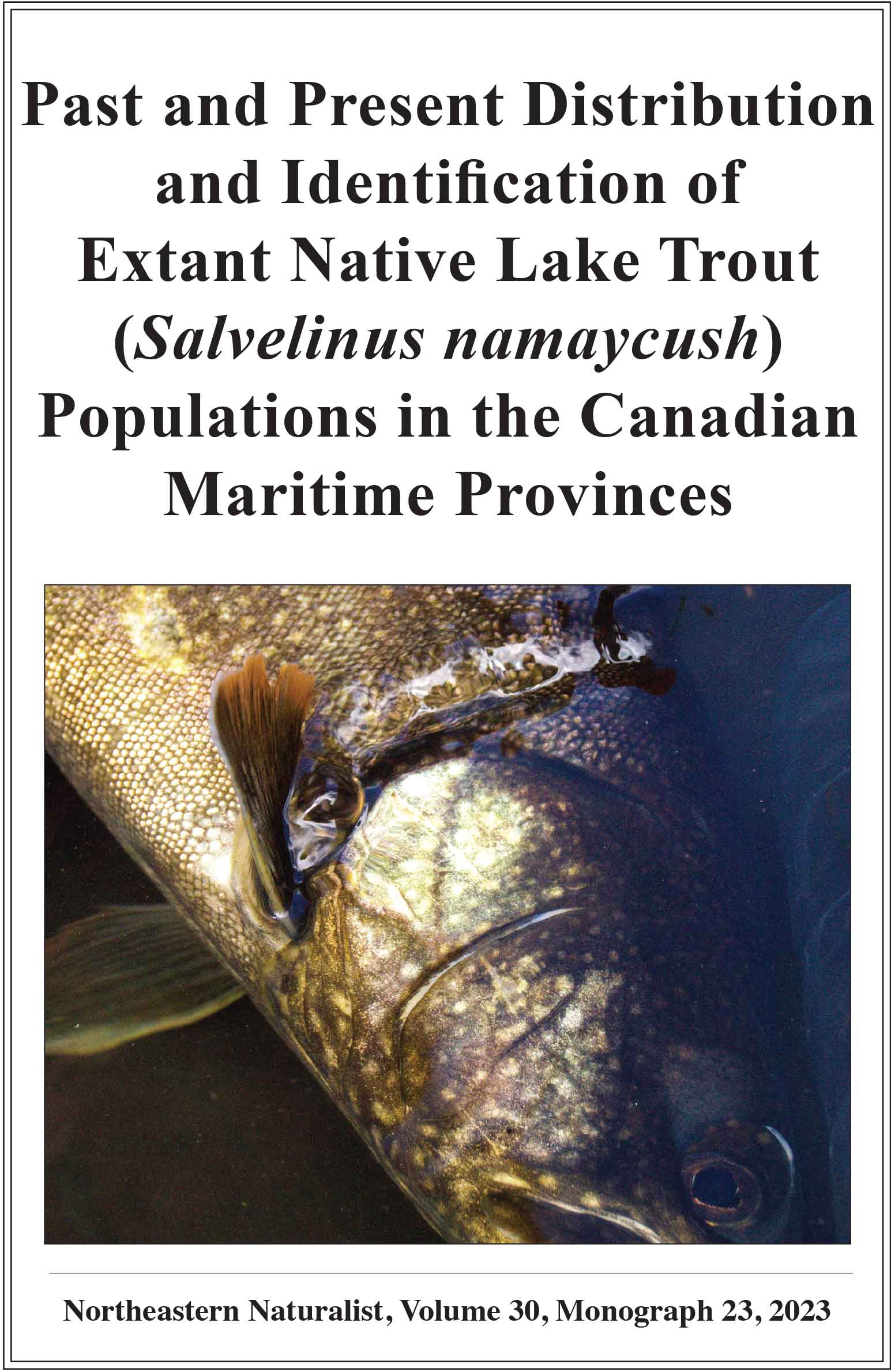Updated Data on Mercury and DDE in Striped Bass (Morone saxatilis) in Relation to Consumption Advisories for the Saint John River, New Brunswick, Canada
Samuel N. Andrews1,*, David H. Roth2, Karen A. Kidd5, Scott A. Pavey6, Bethany Reinhart7, Brian Hayden1, Michael J. Dadswell8, Tommi Linnansaari1,3,4, and R. Allen Curry1,3,4
1Department of Biology, University of New Brunswick, Post office Box 4400, Fredericton, NB E3B 5A3, Canada. 2Department of Forestry, University of New Brunswick, Post office Box 4400, Fredericton, NB E3B 5A3, Canada. 3Faculty of Forestry and Environmental Management, University of New Brunswick, Post office Box 4400, Fredericton, NB E3B 5A3, Canada. 4Canadian Rivers Institute, University of New Brunswick, Post office Box 4400, Fredericton, NB E3B 5A3, Canada. 5Department of Biology and School of Earth, Environment and Society, McMaster University, 1280 Main Street West, Hamilton, ON L8S 4K1, Canada. 6Department of Biological Sciences, Canadian Rivers Institute, University of New Brunswick, Saint John, NB E2L 4L5, Canada. 7Atlantic Coastal Action Program Saint John, 139 Prince Edward Street, Suite 323, Saint John, NB E2L 3S3, Canada. 8Acadia University, Department of Biology, 33 Westwood Avenue, Wolfville, Nova Scotia, B4P 2R6, Canada. *Corresponding author.
Northeastern Naturalist, Volume 30, Issue 2 (2023): 226–243
Abstract
The Morone saxatilis (Striped Bass) population in Saint John River (SJR), NB, Canada, collapsed in the 1970s concurrent with dam construction, overfishing, and chemical pollution that may have impeded reproduction. To assess whether a chemical threat to Striped Bass or a health threat to fish consumers persists, we examined DDT and total mercury (THg) levels from 29 Striped Bass captured in the SJR including 16 genomically typed as SJR natives. DDT and DDD in female gonads were below detectable levels, and DDE averaged 0.08 ± 0.09 mg/kg wet weight (ww) but was considered too low to threaten reproduction. Total mercury in muscle and liver varied from 0.68 to 2.10 mg/kg and 0.35 to 3.27 mg/kg ww, respectively and exceeded Health Canada guidelines in all samples. We suggest regulators should update advisories for consumption including actively informing the public of the risk.
![]() Download Full-text pdf (Accessible only to subscribers. To subscribe click here.)
Download Full-text pdf (Accessible only to subscribers. To subscribe click here.)
Access Journal Content
Open access browsing of table of contents and abstract pages. Full text pdfs available for download for subscribers.
Issue-in-Progress: Vol. 31 (2) ... early view
Check out NENA's latest Monograph:












 The Northeastern Naturalist is a peer-reviewed journal that covers all aspects of natural history within northeastern North America. We welcome research articles, summary review papers, and observational notes.
The Northeastern Naturalist is a peer-reviewed journal that covers all aspects of natural history within northeastern North America. We welcome research articles, summary review papers, and observational notes.